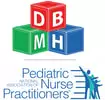Developmental Delay:
|
Page Contributors: Tiffany Lambright, MPH, RN, Anita Allouche, RN, BSN, BA, Kameron A. Sperduto, BSN, RN, and Heather Jenkins-Rosales, BSN, RN
|
Overview
-
Speech Disorders caused by difficulties with the production of sounds, with articulation or pronunciation, stuttering, or vocal problems.
-
Language disorders caused by problems understanding language (receptive language disorder) or difficulty communicating thoughts, ideas and/or feelings in words (expressive language disorder).
- Language delay is when a child’s develops language in the expected order but at a slower rate than average.
- Different types and causes of Childhood Speech & Language Disorders (American Speech-Language-Hearing Association, 2015)
- Speech and Language Delay and Disorder - University of Michigan Health System website
- Speech development by age (table)
Consider a referral for speech/language development evaluation for any child who (ASHA, 2013):
- doesn’t smile or interact with others (birth–3 months),
- doesn’t babble (4–7 months),
- makes only a few sounds or gestures (eg, pointing; 7–12 months),
- says few words (12–18 months),
- doesn’t understand what others say (7 months–2 years),
- doesn’t put words together (18 months–2 years),
- has speech that is unintelligible to unfamiliar listeners (2–3 years),
- struggles to say sounds or words (2½–3 years).
Assessment & Screening
Position Papers
- Screening for Speech and Language Delay and Disorders in Children Aged 5 Years or Younger: US Preventive Services Task Force Recommendation Statement (2015)
- Identifying infants and young children with developmental disorders in the medical home: an algorithm for developmental surveillance and screening (AAP, 2006) -- Open Access AAP Policy Statement *Includes table of screening tools: AAP Council on Children with Disabilities.
Articles
- Speech-Language Impairment: How to Identify the Most Common and Least Diagnosed Disability of Childhood (Prelock, et al, 2008)
- Ten questions about terminology for children with unexplained language problems (Bishop, 2014)
- Management of Developmental Speech and Language Disorders (O'Hare & Bremner, 2016)
- Validity of the ages and stages questionnaires in term and preterm infants (Schonhaut, et al, 2013)
Resources
Treatment
Interventions
Other resources:
|
Organizations
|
